There’s a saying around these parts that ‘what is dead may never die’ and with the final season already upon us the maester decided to pen a bit more words before we say goodbye to Game of Thrones as we know it. Today’s lesson: swords. Valyrian steel swords are the best weapons the living have against the dead, so what better moment than now, before the battle is done, to go through them, and a few other named swords as well.
Named swords (and other kind of weapons) can be found in both fantasy and history. Take Excalibur as an example, the legendary sword from the legends of King Arthur -which may be even more popular than the king himself. Or Sting, the Elvish blade that belonged to Bilbo Baggins (and then Frodo) in J.R.R. Tolkien’s The Hobbit and The Lord of the Rings.
Why would people name their swords, though? To be fair, naming inanimate objects (like ships, guitars or even cars) isn’t that uncommon. But when it comes to weapons, there can be a number of different reasons.
A well-manufactured sword wasn’t cheap. Bear in mind that making one can take a lot of time, especially if it’s a labor of love. A sword is a unique kind of weapon – hardly just a piece of pointy metal. It comes in a variety of shapes and designs (two-handed swords such as the claymore, double-edged swords like the greatswords or the longswords, edgeless such as the rapier, curved like the falchion or the katana), each with its own traits.
As an audience, we’re used to see brief montages of molten metal being poured into a cast, then some hammering here and there and ta-da, the sword is done.
A standard, cheap sword could be ready in a matter of days, but a more ornate one could take weeks – at best. It’s not just a butter knife, after all.
Swordmaking was an art, so it stands to reason that a good sword couldn’t be made by any blacksmith. You’d need a swordsmith, someone with the skill to not just shape the iron into a steel blade that is hard enough – but resilient and flexible as well, so they can bend but not break.
But most importantly, a swordsmith needed to know how to temper a blade. Back then there was no way to measure time or temperature like we can nowadays – no clocks or thermometers of any kind. So he had to rely on his experience and trust his instincts.
No easy task, as one mistake may possibly ruin a good blade, and then all that work would go to waste.
And that’s not even half of the process, since the blade would later need to be quenched (in water, oil or brine) and then polished, sharpened and decorated (if requested by the client).
Once done with all that, the blade still needed a hilt. And not just any hilt, there were no “one size fits all” kind of hilt, oh no – it had to fit perfectly, so the blade could be useable. Hilts could be made of metal, hard wood or bone, and decorated by incrusting jewels in it, give the pommel a particular shape or etch patterns in the grip.
As it still happens with people who are good at their job, talented swordsmiths were recommended and thrived thanks to word of mouth. And swords, especially if custom-made, were among the most valuable things someone might have in the Middle Ages. So it’s no surprise that the people who owned a sword would want to call attention to them (especially if we’re talking about kings or skilled warriors).
Some historical swords survive to this day and are on display at museums, such as “Tizona”, which belonged to Rodrigo Díaz de Vivar (“El Cid”) or Charlemagne’s sword, “Joyeuse”. And mythical swords keep showing up in fiction and are sold as non-lethal replicas.
There are places like Toledo (in Spain) where you can find “Ice and Fire” swords, from both the novels and the TV show. And it’s in this case where arguably Arya got the last laugh, because Needle can be obtained by collectors but the Hound’s sword is nowhere to be seen (his helmet is another story, but alas, it’s not a sword).
Just a handful of (named) swords have appeared in Game of Thrones, and even less of them remain in play. No doubt that they’ll prove valuable in the battle against the Army of the Dead, so I’d expect to see them along with their owners.
But which ones are they? Here’s a bit of a refresher:
ICE
Eddard’s sword, Ice, is no more. But the Valyrian steel greatsword belonged to House Stark for hundreds of years (it comes from the Age of Heroes! Perhaps we’ll see it in the prequel?) before being melted by Tywin Lannister in order to make two other swords.
Greatswords were the largest weapons of their kind, and couldn’t be wielded with only one hand, since they were both long and heavy. They were as big as a person, so GRRM’s description of Ice (as taller than Robb) was pretty accurate.
Despite Valyrian steel is no common steel (it’s much lighter and also sharper, and doesn’t need to be sharpened since it won’t lose its edge), George himself suggests that it’s not likely Ned ever used Ice in battle, since it was so large and heavy (remember Theon had to hold it for Ned to be able to remove it from its scabbard!), which would have made him slow and clumsy.
So it seems it was more of a family heirloom reserved for special occasions (beheadings!) than a sword used for actual combat.
NEEDLE
Arya’s weapon, according to actual medieval weapon experts, is more similar to a foil than a medieval weapon, since it’s not a full blade and its most important part was -you guessed it- the pointy end. Although it was used as a practice weapon for small-swords (the weapon of choice between mid 17th and late 18th century) you just needed to take away the protection to make it sharp and dangerous.
Much like Syrio Forel taught Arya about the water dance, the foil wasn’t used to hack, slash or hammer the opponent. It required near-perfect accuracy, since the user would need to target the vital organs of the enemy.
Duel weapons weren’t meant to be used in warfare (they were more useful as sidearms, like a bayonet), but they were highly effective in one-on-one fights, and they were also used as status symbols, not too different to, say, a top hat. If you wanted to look elegant and/or important, carrying a duel sword with you was a must.
Of course, that’s not the case nowadays, though small swords are still part of uniforms in both military academies or institutions.
LONGCLAW
Longclaw is a bastard sword, which is either ironic or appropriate depending on how you look at it.
Bastard swords were in the middle of the road between greatswords (such as Ice) and longswords (like both Oathkeeper and Widow’s Wail). That’s one of the reasons this weapon got a name like that, since it couldn’t be categorized as one or the other.
The grip is long enough it can be held with two hands, but it’s not as heavy as a greatsword, which allows it to be used with one hand, no problem.
But what really makes it stand out from the other weapons in the show is the pommel, which looks like the head of Jon’s direwolf, Ghost. Originally a bear, Jeor Mormont had it replaced so the sword could be a present for his then personal steward.
It should be noted that pommels weren’t just decorative, they were meant to act as counterweights – a heavy pommel will result in a lighter tip, easier to maneuver, whereas a lighter pommel will have the opposite effect (but in that case the blade will hit harder). There wasn’t a blueprint for a “correct balance” since there could be different purposes for a blade.
A heavier tip would be useful to knock an opponent down with a strong enough blow, causing damage both to the body (and possibly the armor or chainmail) in the process. A forceful whack may also either break a shield or make the foe drop it.
On the other hand, a lighter tip was easier to direct to a vulnerable spot – and then thrust. Stick them with the pointy end.
Pommels doubled as weapons in their own right, too, as blunt instruments. Useful for striking enemies in weak spots – the face, for instance. It was a non-lethal (albeit painful) alternative to fell someone, unless the pommel was used to hit repeatedly, in which case things could get messy.
A lot of pommels were plain and round (or shaped like a pear of sorts), but some of them (like Jon’s) were unique, reflecting their owners’ beliefs or culture. There are hundreds, if not thousands, of different varieties and all of them tell different stories. We’ll soon get to see how Jon’s story will conclude – and I think the Night King may (or shouldn’t) not be too eager to get close to his valyrian steel blade.
OATHKEEPER / WIDOW’S WAIL
Both Oathkeeper and Widow’s Wail are Valyrian steel longswords that were made from Ned Stark’s greatsword, Ice. The longsword got its namesake not for having a long blade, but a grip that was intended for two-handed use. Its purpose was to be a weapon for warfare, and were mostly used by full-plate armored knights.
Longswords have a great reach and were able to cut off limbs or heads with a single clean stroke. If used by a knight on horseback, the thrusting ability of the weapon became especially dangerous, being able to be lodged deep into the bodies of enemy combatants.
They were quick, reliable and strong weapons, useful both for the battlefield and one-on-one duels, which made them a standard military sword for at least a couple of centuries. By the late 15th century they started to decline, though, and became obsolete by the time the 16th century arrived, replaced by rapiers and broadswords, among other kinds of blades.
It’s safe to assume Oathkeeper will remain in Brienne’s hands, and the same can be said about Jaime and Widow’s Wail – though it’s gonna be interesting to see how the Kingslayer handles himself against the undead. Losing his right hand turned him into a mediocre fighter to say the least (he has received help by both Dickon and Bronn in battle), but he remains a brave warrior who’s willing to risk his skin in order to change the outcome of a fight – he did try to take Dany out even if it meant getting burned to a crisp by Drogon.
The name of Brienne’s sword perfectly sums her up – she’s loyal and determined and fulfilled his oaths to both Renly Baratheon and Catelyn Stark (which was quite satisfying to watch, considering Brienne’s quest in the novels has been unfortunate so far). Jaime’s weapon keeps the name Joffrey chose for it (“He really was a cunt”, in the words of the late Olenna Tyrell), which is a bit curious. Conscious choice to honor the memory of his deceased son? Or not enough interest to rename it? Be that as it may, it’s rather apt that, in a way, Ned’s sword is coming home at long last.
HEARTSBANE
The ancestral sword of House Tarly is a two-handed greatsword, a (seemingly) smaller one than Ice however, and thus easier to handle: Sam was able to remove it from its stand with a single hand!
As one of the few remaining Valyrian steel blades, it is sure to see battle against the Army of the Dead soon enough, which is yet another difference with the Stark ancestral sword, which was more of a ceremonial weapon than one designed for combat.
While Ned’s sword was relatively plain-looking, Heartsbane is richly decorated, its hilt depicting a hunting scene and the blade itself sporting a beautiful pattern. The prop makers really went to town with it, and it’s kind of a shame the camera just cannot pick up every detail.
Since Sam is not a fighter and we probably won’t see him riding into battle, he’ll give up the sword so someone else can use it. It’d be far too valuable an asset to waste. In the trailer, and the next episode preview, we see it’s Jorah he gives it to, appropriately.
Assuming Heartsbane doesn’t get lost (if, say, Jorah gets killed), then by the time all is said and done, it should return to Sam’s hands.
LIGHTBRINGER
It is possible that the show is done with Lightbringer – it was never given all that much attention to begin with, and once Stannis was out of the picture, the sword was gone as well. The legend of Azor Ahai could make its way to the final season if one of my theories regarding Melisandre proves to be correct, but I’m not sure the screenwriters will want to drop some more lore in what surely will be some action-packed episodes.
So why include Lightbringer at all? Well, it has to do with the “magic sword” theme, which I feel couldn’t be left out from the article.
Magic or legendary swords are a staple of the fantasy genre, there’s at least one in most popular written fiction. But they have their roots in real ancient history.
Much like in Game of Thrones, there were swords that passed down from generation to generation, and were kept as a symbol of status (especially if the sword was used in an important battle, killed many enemies or belonged to a famous warrior) and beloved family treasures.
And some of them were believed to hold a soul (or many souls) inside – it could be one of its own, its maker’s soul or the stolen spirits of its victims.
There were swords that were considered to be cursed or bloodthirsty, or even worse, possessed by a demon. It was up to the wielder to see if he was able to control such blades.
The story of Lightbringer in the Ice and Fire novels follows this well-established path, by describing how Azor Ahai’s sword was imbued with the soul of his wife Nissa Nissa after he drove the blade through her heart, turning it into a magic sword made of living fire.
Whether or not a variation of Azor Ahai’s legend will happen in the adaptation remains to be seen.
Hello again. It’s been a while.
Much like the Starks after retaking Winterfell from the Boltons, I feel happy to be back at writing about Game of Thrones. The show is about to complete the final lap, and the journey we started back in 2011 is coming to an end.
It’s both with a sense of excitement and curiosity that I’ll be finally be able to find out how my “Endgame” theories stack up against the final six episodes. I’m expecting to be wrong about a lot of things, but that’s part of the fun, to be surprised by the twists and turns of the narrative.
It’s going to be hard to say goodbye to the show, even if we still have two novels and a HBO prequel to look forward to. There’s nothing quite like it, and I’m confident David and Dan will stick the landing, thus cementing its place as one of the best TV series from our time. Surely not everyone will like the ending, but hopefully it’ll be satisfying for most fans.
But the epilogue is still some weeks away, and even after the credits roll for the last time, there’ll be still a lot to discuss and write about. I hope you enjoyed this new article and the ones that’ll follow, this time with a bit of historical flavor. 
The post From the Maester’s Desk: A Brief History of Swords and their Role in Season 8 appeared first on Watchers on the Wall.
Via http://watchersonthewall.com
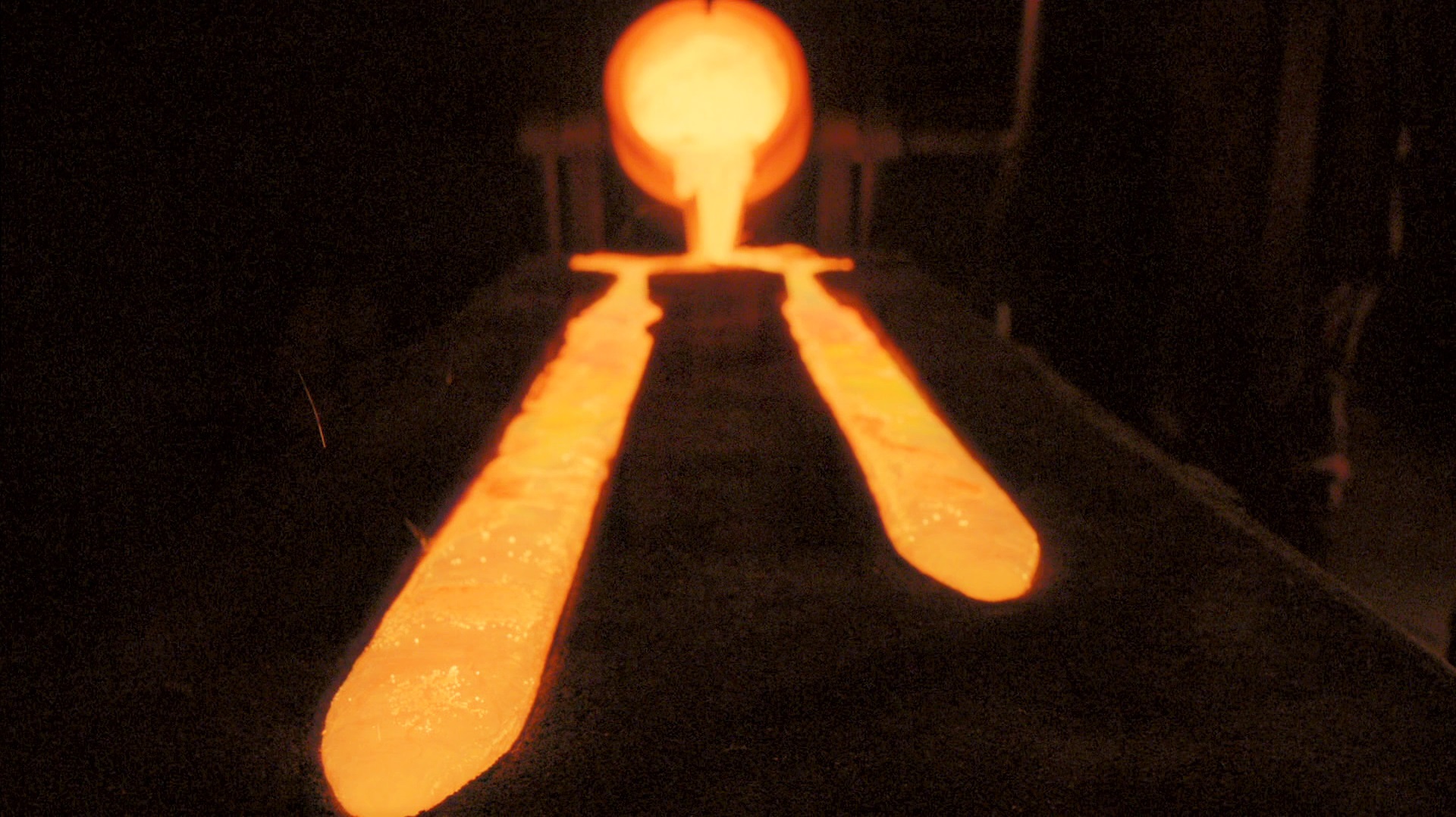

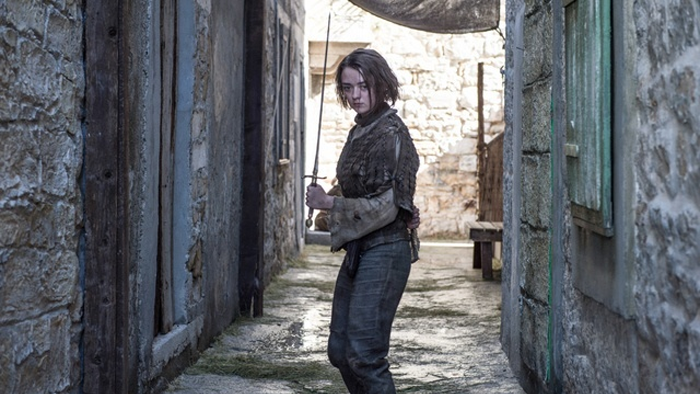
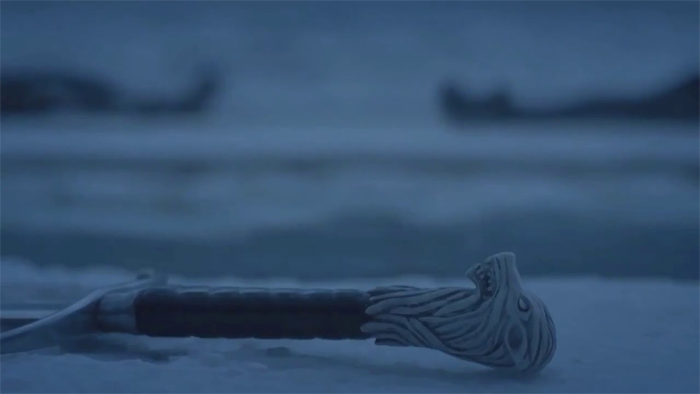
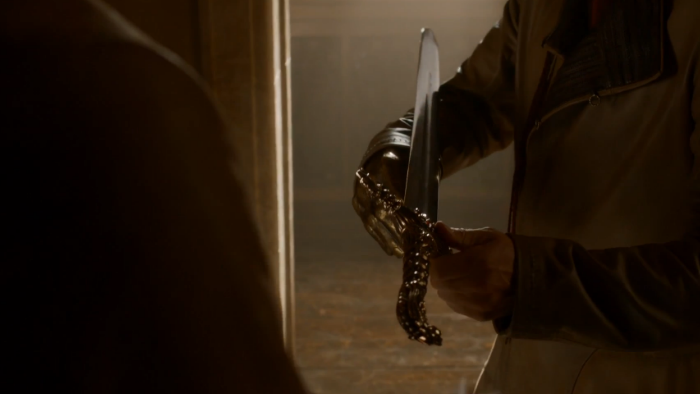
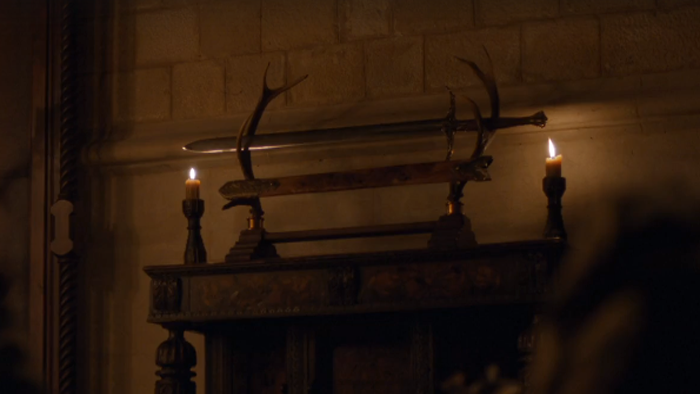
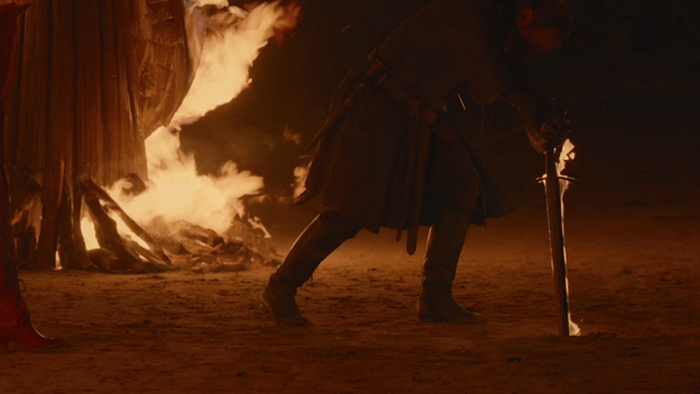
No comments:
Post a Comment